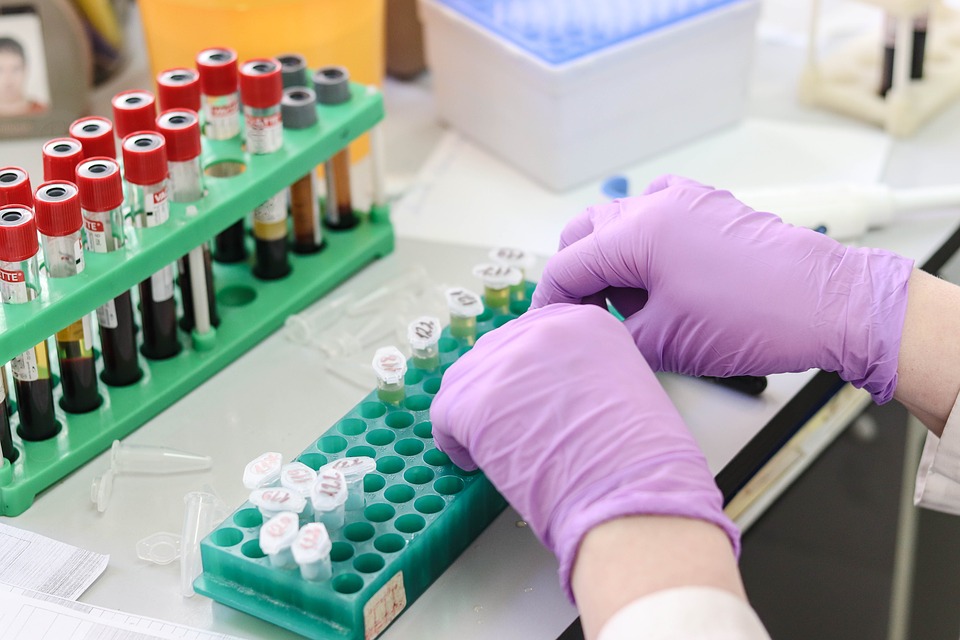Speeding the availability of drugs that treat serious diseases is in everyone's interest, especially when the drugs are the first available treatment or if the drug has advantages over existing treatments. The Food and Drug Administration has developed four distinct and successful approaches to making such drugs available as rapidly as possible: Priority Review, Breakthrough Therapy, Accelerated Approval, and Fast Track, including the Regenerative Medicine Advanced Therapy (RMAT) Designation under CBER. Because each of these approaches implies speed, there can be confusion about the specific meaning of each and the distinctions among them. The Breakthrough Devices Program is a voluntary program for certain medical devices and device-led combination products that provide for more effective treatment or diagnosis of life-threatening or irreversibly debilitating diseases or conditions. This program is intended to provide patients and healthcare providers with timely access to medical devices by speeding up development, assessment, and review for premarket approval and marketing authorization. Breakthrough Devices must meet the FDA’s rigorous standards for device safety and effectiveness to be authorized for marketing.
WHY SHOULD YOU ATTEND?
Serious or life-threatening diseases remain a large unmet medical need in the United States, as many do not currently have effective therapies. As innovative therapies are increasingly researched and developed, including regenerative medicine therapies, it is important to expedite such treatments to ensure patients are treated as quickly as possible. This presentation will focus on what these expedited review programs are, the incentives for obtaining such designations, and the required information/data to better position your investigational product for success.
AREA COVERED
- Overview of the FDA expedited review programs and why they are vital for increasing the likelihood of advancing an investigational product to market
- Which expedited program do I qualify for?
- What are the costs, benefits, and risks of each program?
- How and when do I apply?
- Key strategic considerations and proven recommendations for choosing expedited pathway(s) for your investigational drug and medical device
- FDA guidance and resources
- Advantages and disadvantages when applying for a designation and effectively navigating through these programs
- Number of FDA-granted designations for the most recent fiscal year for the programs
LEARNING OBJECTIVES
- Learn key regulatory definitions related to the FDA expedited review programs, including Breakthrough Device Designation, FTD, BTD, and RMAT Designation
- Understand the requirements of a successful “Designation Application” and when to submit such documents
- Recognize the importance of expedited review programs and their impact on reducing drug development time
- Understand the criteria for each program
- Learn how to request your designation if the investigational product is eligible
- Identify and understand with more clarity the benefits of these programs
- Understand that despite the similar definitions and implications, each route has its own qualifications and necessary steps
WHO WILL BENEFIT?
- Regulatory Affairs Managers, Directors, Vice-Presidents, Regulatory Specialists, Regulatory Consultants, Regulatory Leads, Regulatory Project Managers, Regulatory SMEs, Sr. Management, and other disciplines who would like to learn more about these FDA programs. The webinar will benefit regulatory professionals and pharmaceutical/biotech and medical device companies that are developing products intended to treat serious conditions with an unmet medical need, including Compliance Officers and Clinical Research and Development Teams.
Serious or life-threatening diseases remain a large unmet medical need in the United States, as many do not currently have effective therapies. As innovative therapies are increasingly researched and developed, including regenerative medicine therapies, it is important to expedite such treatments to ensure patients are treated as quickly as possible. This presentation will focus on what these expedited review programs are, the incentives for obtaining such designations, and the required information/data to better position your investigational product for success.
- Overview of the FDA expedited review programs and why they are vital for increasing the likelihood of advancing an investigational product to market
- Which expedited program do I qualify for?
- What are the costs, benefits, and risks of each program?
- How and when do I apply?
- Key strategic considerations and proven recommendations for choosing expedited pathway(s) for your investigational drug and medical device
- FDA guidance and resources
- Advantages and disadvantages when applying for a designation and effectively navigating through these programs
- Number of FDA-granted designations for the most recent fiscal year for the programs
- Learn key regulatory definitions related to the FDA expedited review programs, including Breakthrough Device Designation, FTD, BTD, and RMAT Designation
- Understand the requirements of a successful “Designation Application” and when to submit such documents
- Recognize the importance of expedited review programs and their impact on reducing drug development time
- Understand the criteria for each program
- Learn how to request your designation if the investigational product is eligible
- Identify and understand with more clarity the benefits of these programs
- Understand that despite the similar definitions and implications, each route has its own qualifications and necessary steps
- Regulatory Affairs Managers, Directors, Vice-Presidents, Regulatory Specialists, Regulatory Consultants, Regulatory Leads, Regulatory Project Managers, Regulatory SMEs, Sr. Management, and other disciplines who would like to learn more about these FDA programs. The webinar will benefit regulatory professionals and pharmaceutical/biotech and medical device companies that are developing products intended to treat serious conditions with an unmet medical need, including Compliance Officers and Clinical Research and Development Teams.
Speaker Profile
 David R. Dills
David R. Dills
David Dills is currently a Global Regulatory Affairs Consultant after departing his last company earlier this year in 2024 and a full-service CRO as Director of Regulatory Services. He is a seasoned Global Regulatory Affairs, Regulatory Strategist, and Compliance professional with demonstrated capabilities and a track record with more than 35 years of accrued experience in the functional areas of Regulatory Affairs, Regulatory Intelligence, Regulatory Compliance, Global Regulatory PM/PD, and QA/QAE for US and international developers/manufacturers/sponsors for early-stage, mid- and large-size enterprises for pharma, biologics, combination, and medical device products from investigational to marketing approval. He has worked for CROs, …
Upcoming Webinars

Impact Assessments For Supplier Change Notices

What is in Store for Employers When Updating Employee Handb…

Mastering Job Descriptions: Legal and Practical Insights fo…

Effective Onboarding: How to Welcome, Engage, and Retain Ne…

Designing Employee Experiences to Build a Culture of Compli…

Accounting For Non Accountants : Debit, Credits And Financi…

Onboarding Best Practices for 2025: Proven Strategies to Po…

FDA Compliance And Laboratory Computer System Validation

Creating a Successful Job Rotation Program

The Anti-Kickback Statute: Enforcement and Recent Updates

How To Create Psychological Safety in your Organization

Aligning Your HR Strategy with Your Business Strategy

Transforming Anger And Conflict Into Collaborative Problem …


How to Give Corrective Feedback: The CARE Model - Eliminati…

Zero Acceptance Sampling to Reduce Inspection Costs

AI at Your Service: Enhancing Your Microsoft OfficeSkills w…

Identifying, Managing, and Retaining High Potential Employe…

I-9 Audits: Strengthening Your Immigration Compliance Strat…


Why EBITDA Doesn't Spell Cash Flow and What Does

Female to Female Hostility @Workplace: All you Need to Know

FDA Recommendations for Artificial Intelligence/Machine Lea…

Developing and Implementing Quality Culture in the Organiza…

Project Management for Non-Project Managers - How to commun…

Dealing With Difficult People In Life & Work

How to Document Employee Discussions and Why it is Important

Human Factors Usability Studies Following ISO 62366 and FDA…

Enhancing Pivot Tables with Images: Visualize Your Data Lik…

2-Hour Virtual Seminar on the 6 Most Common Problems in FDA…

Sunshine Act Reporting - Clarification for Clinical Research


Project Management for administrative professionals

How to Write Contracts for Procurement Professionals

Reprogramming your mind for Corporate Excellence: 4 Steps t…

Transform Data into Insights: A Beginners Guide to Excel Pi…

Terminating Toxicity: Strategies For Leaders To Confidently…

Uplifting the Credibility of HR: How to Build the Credibili…

How to Write Effective Audit Observations: The Principles f…

How to Manage the Legal Landmine of the FMLA, ADA and Worke…


Bridging Generational Divides in the Workplace

Onboarding Best Practices for Millennial and All Employees

Strategic Interviewing & Selection: Getting the Right Talen…

Performance of Root Cause Analysis, CAPA, and Effectiveness…

Emotional Intelligence: Mastering the Emotions of Great Lea…

FDA Audit Best Practices - Do's and Don'ts

2-Hour Virtual Seminar on How to Conduct an Internal Harass…


Successful Strategies for FDA Expedited Pathways for Your D…
